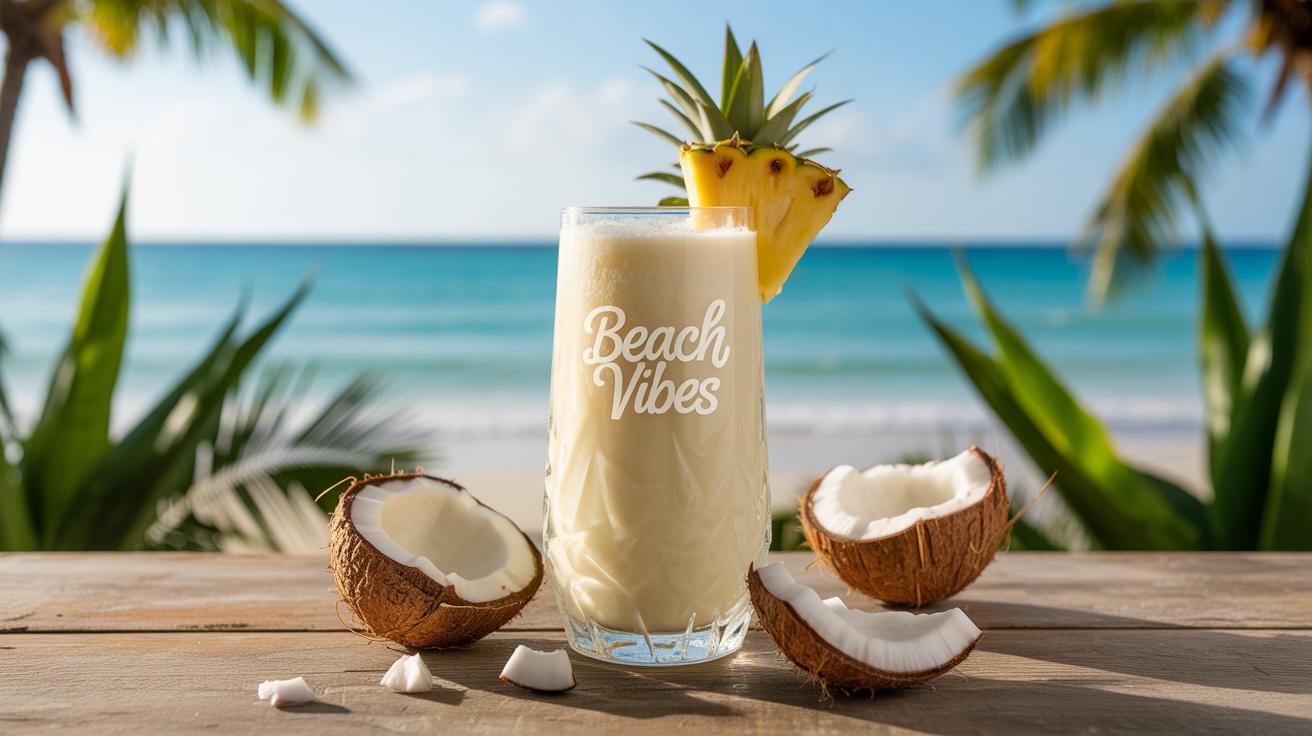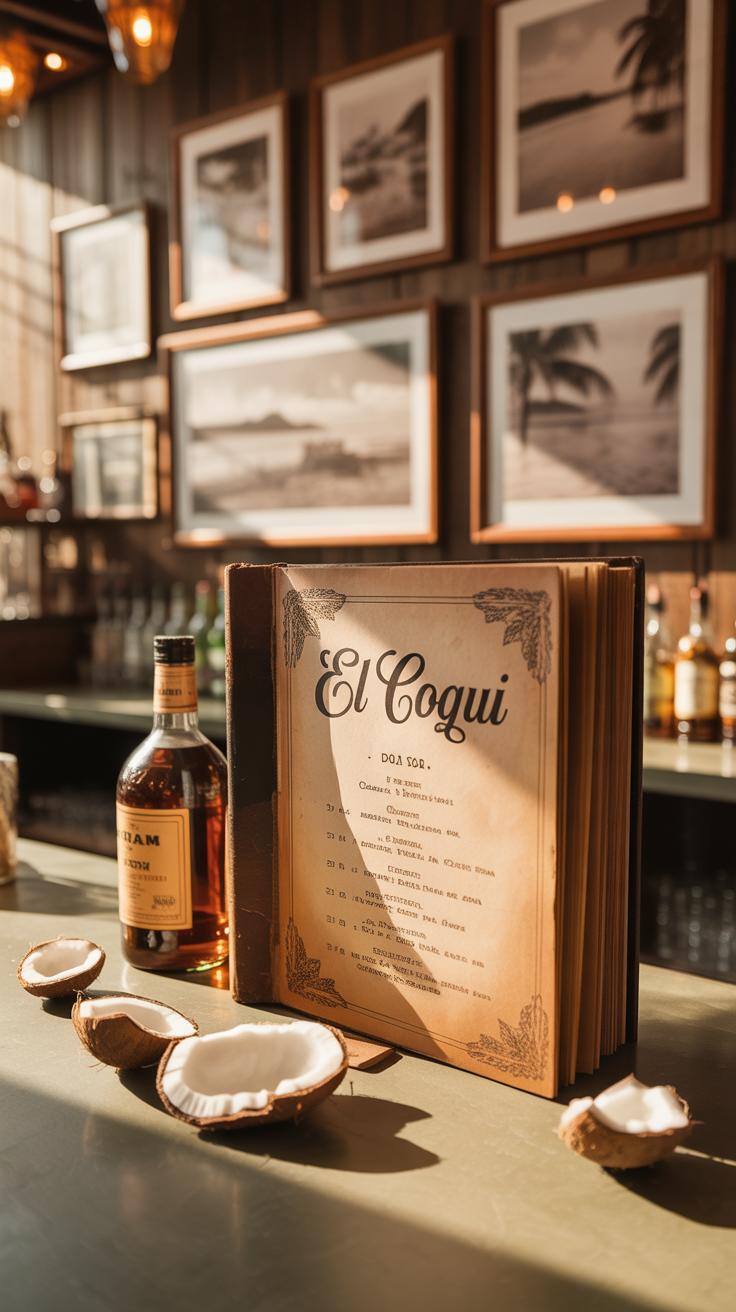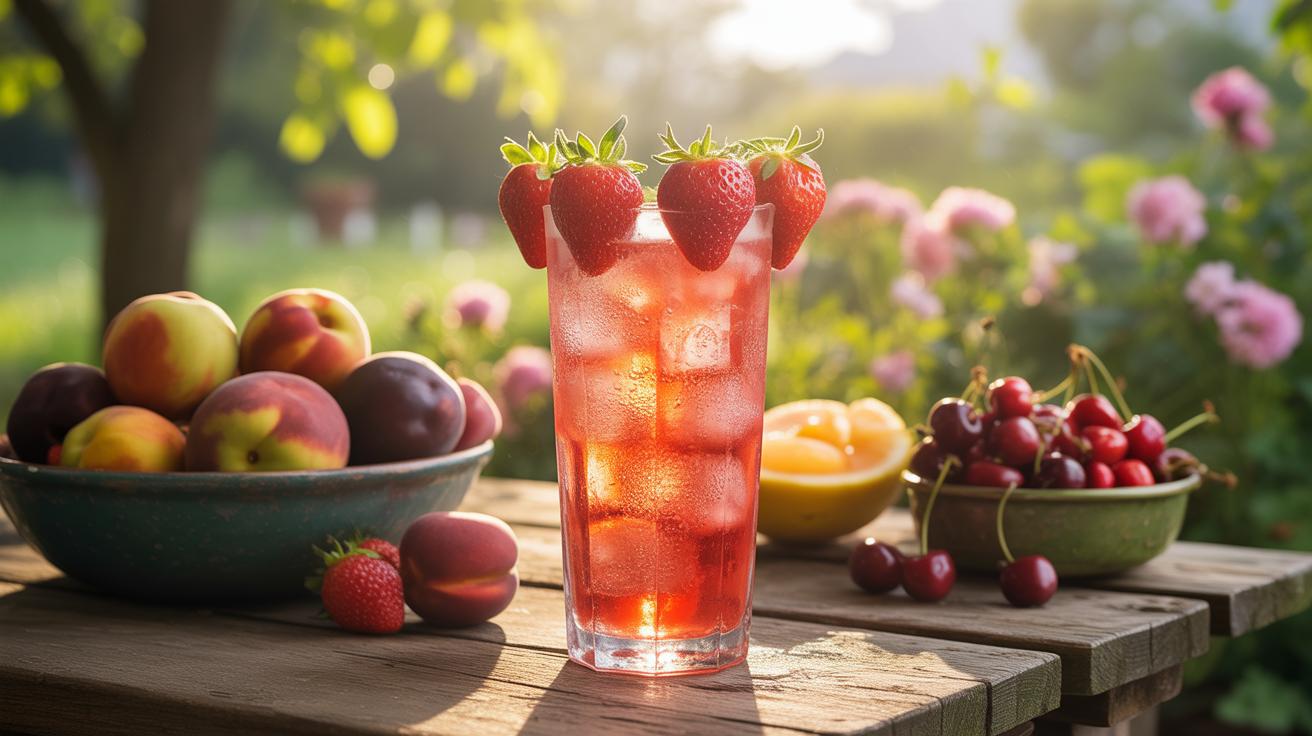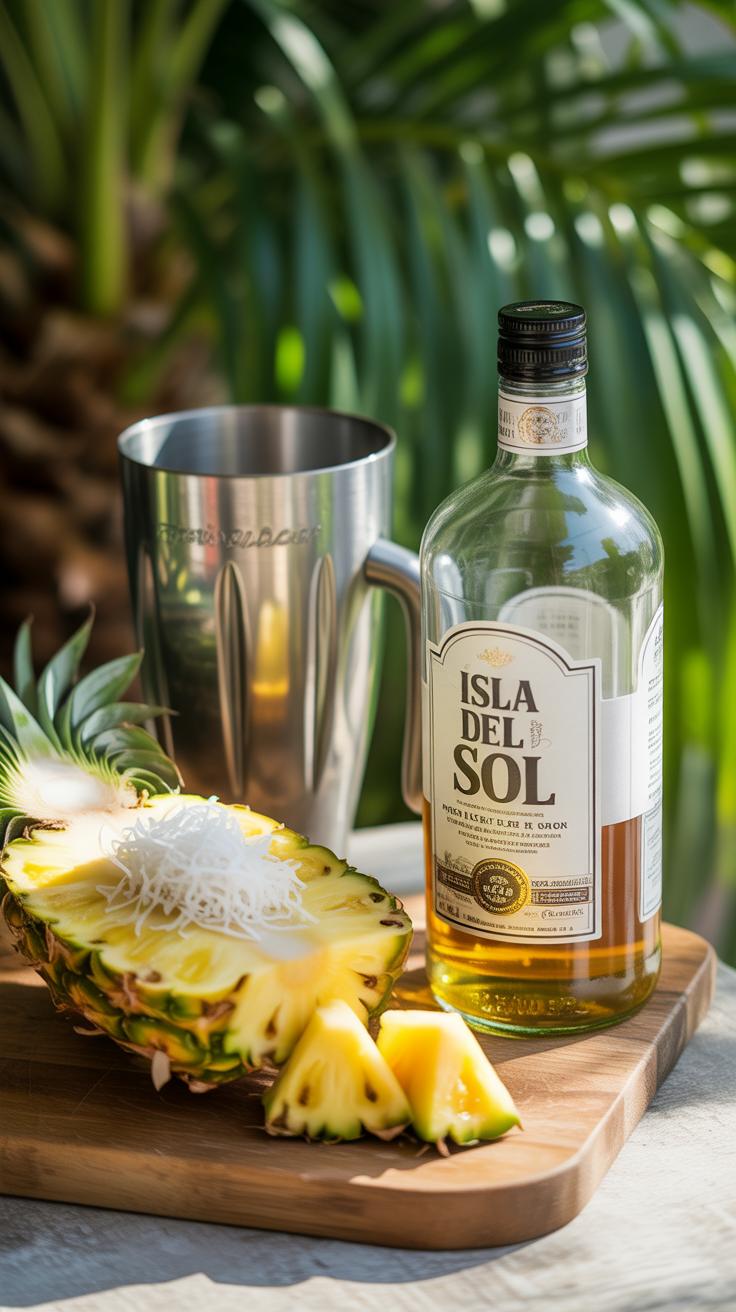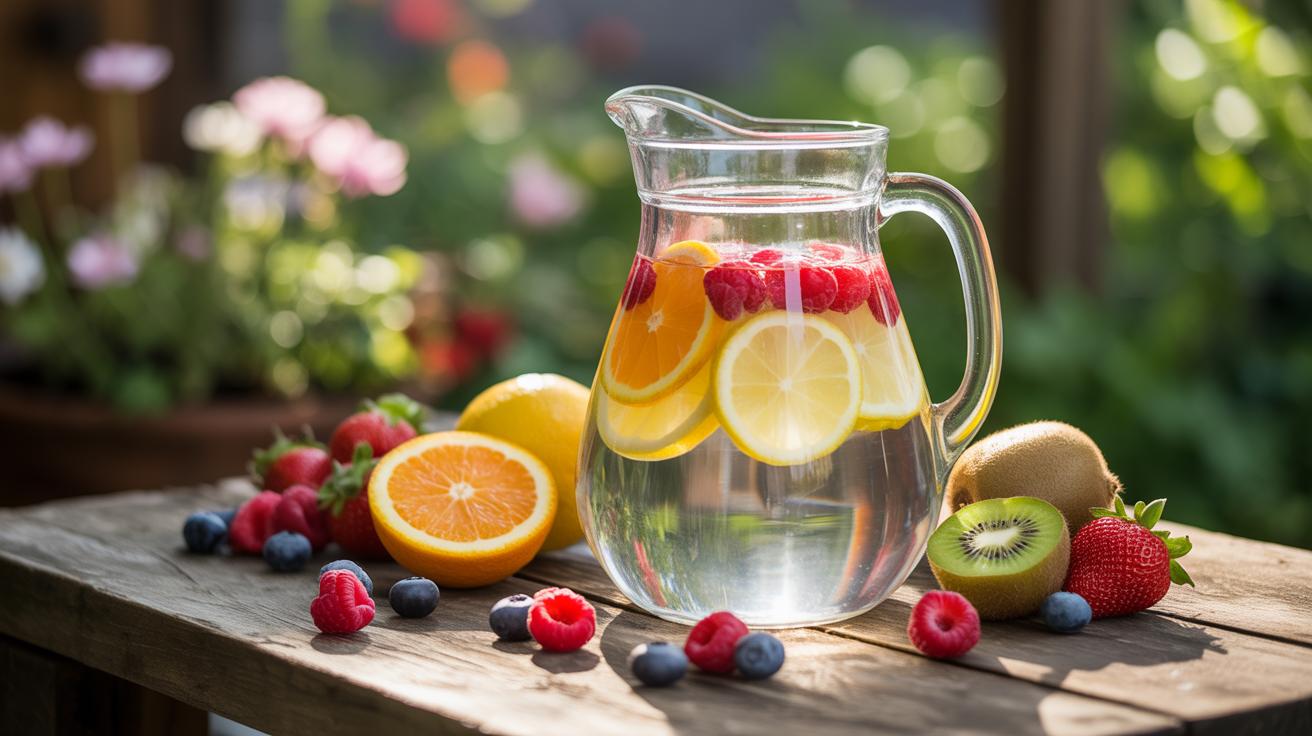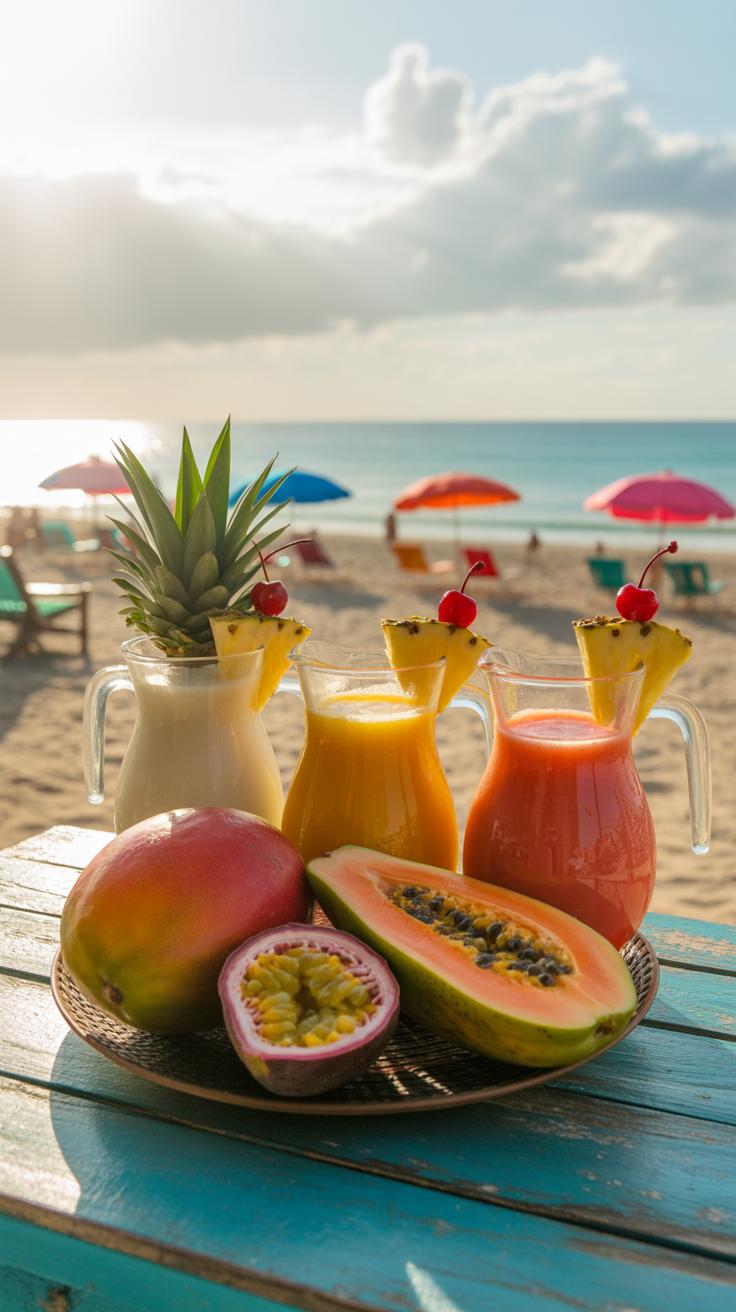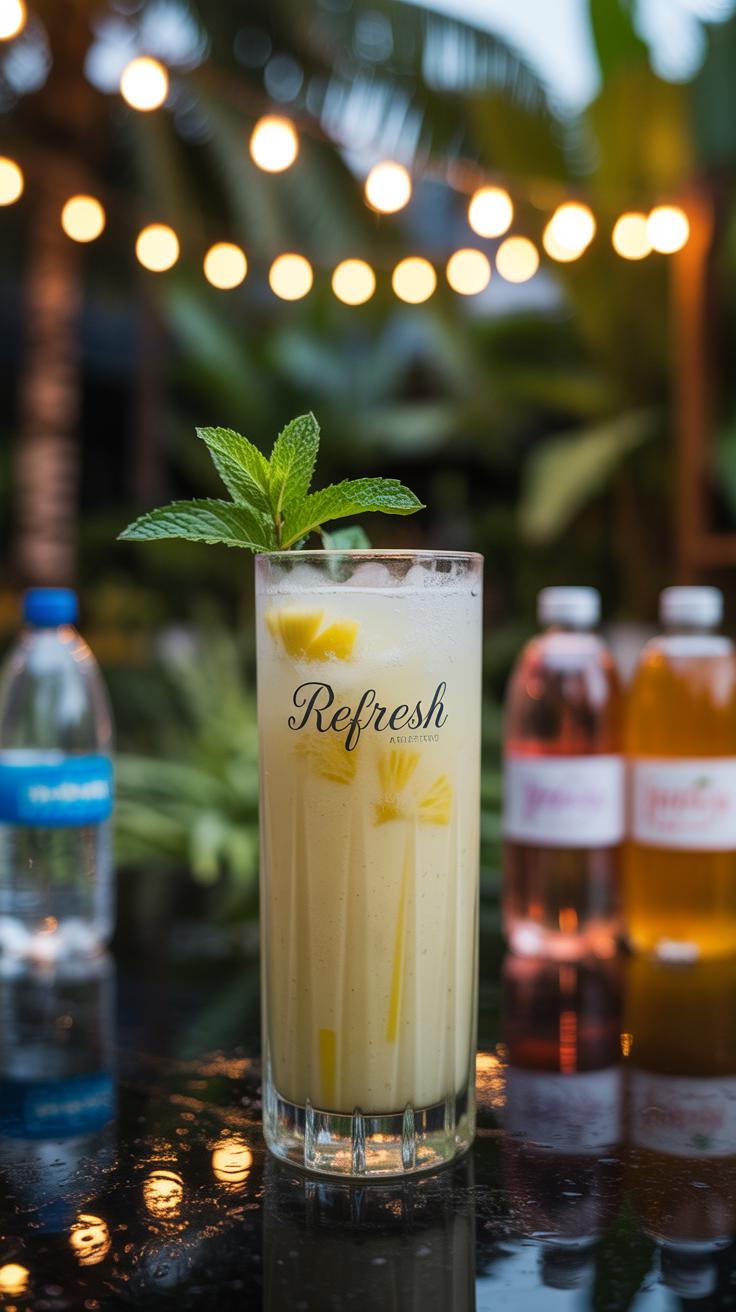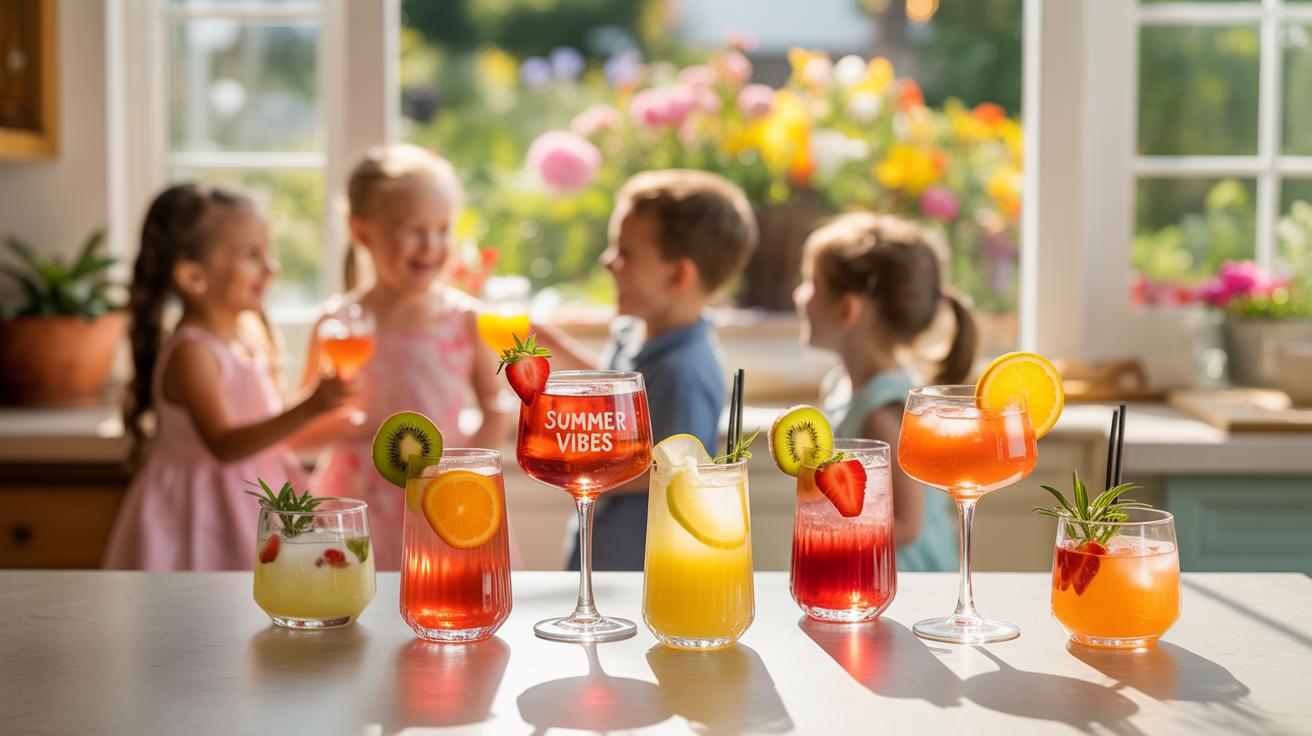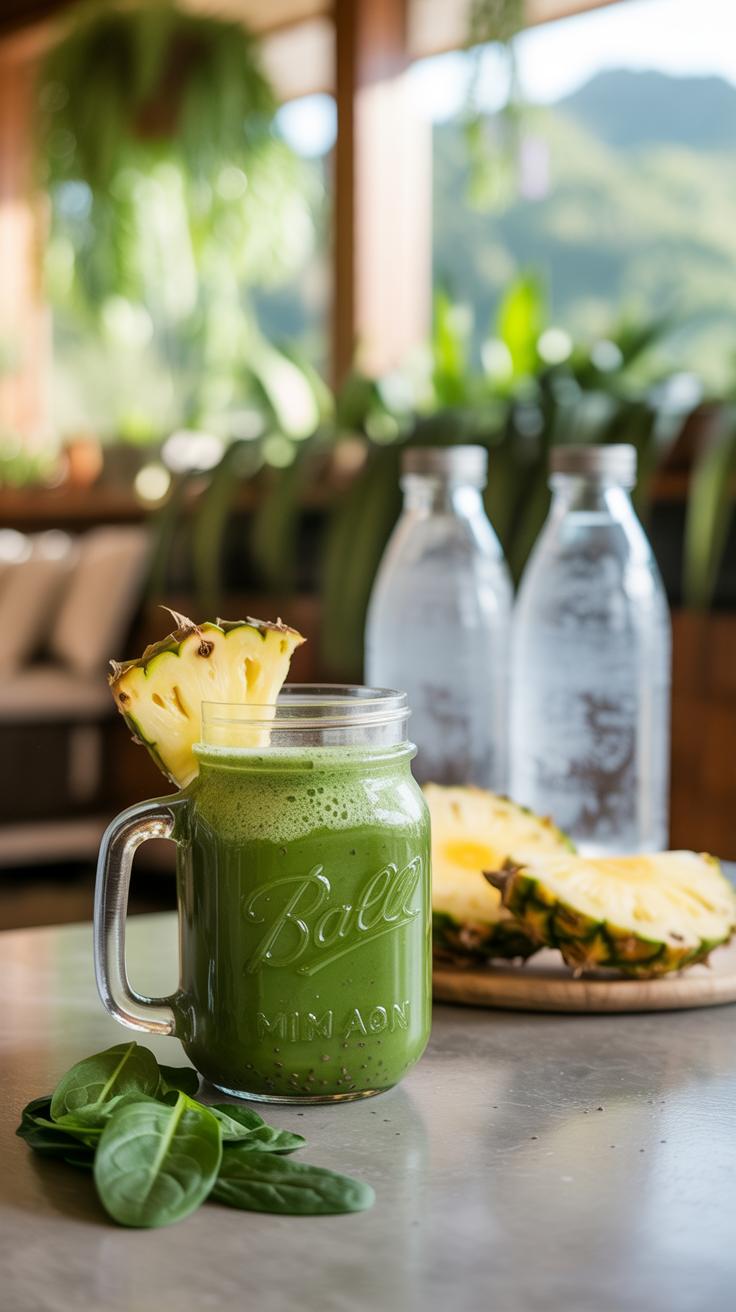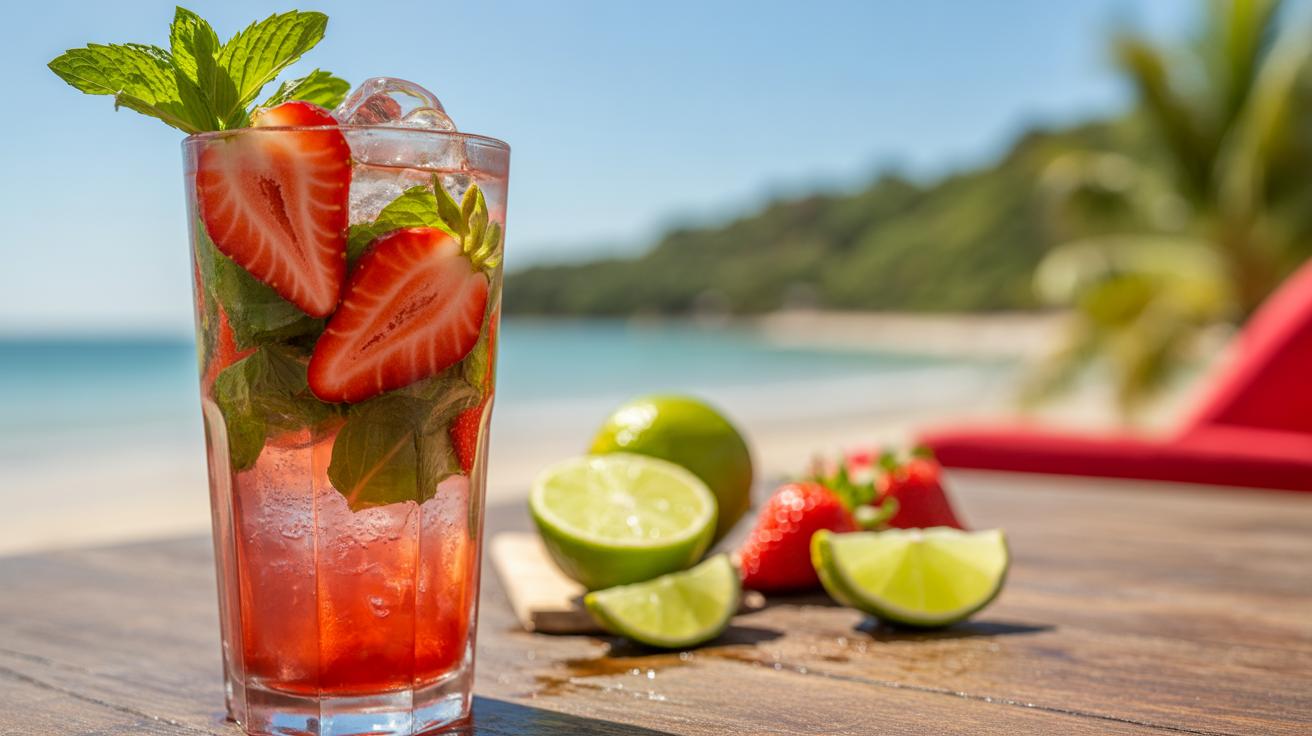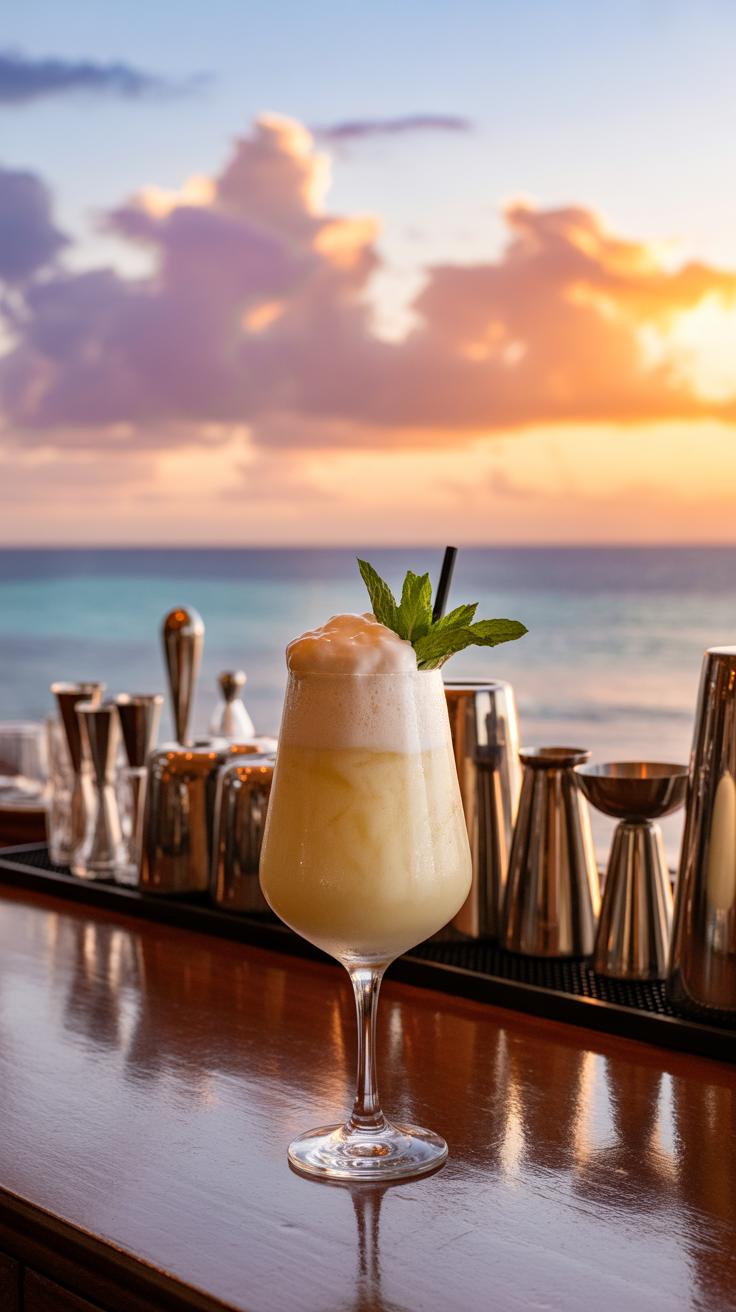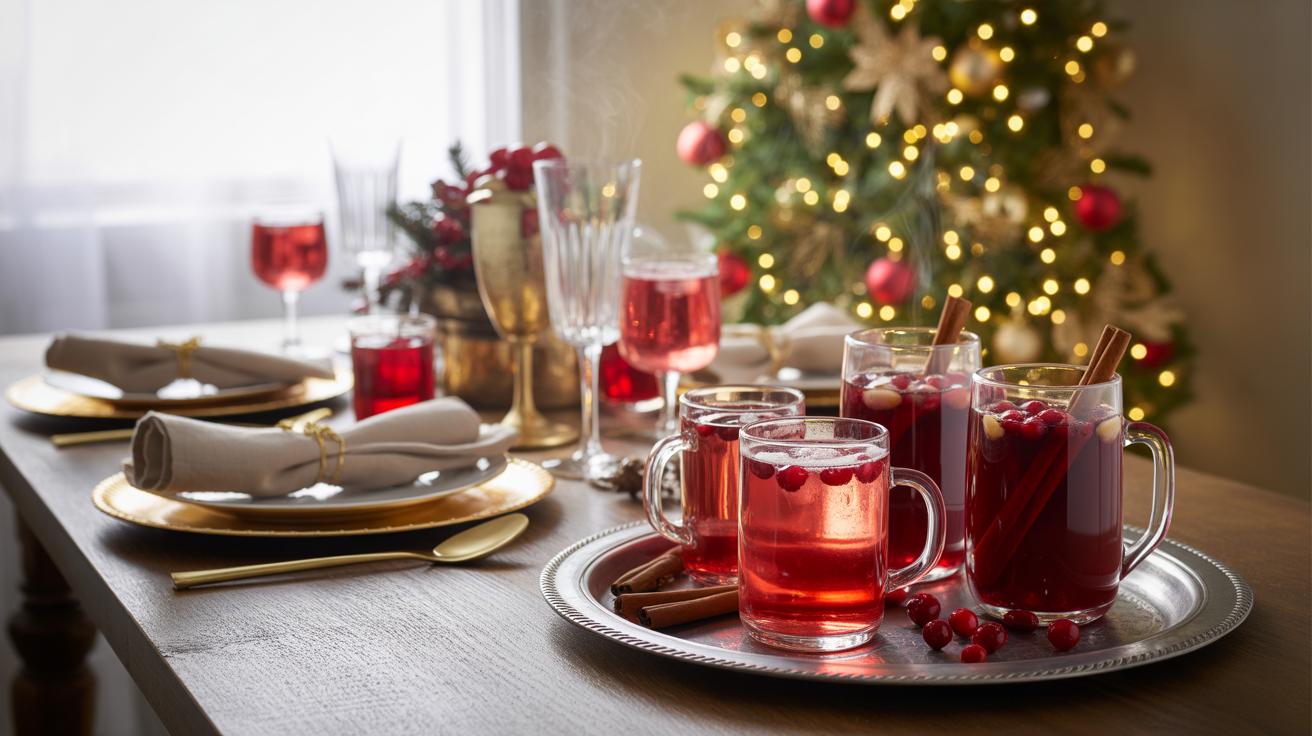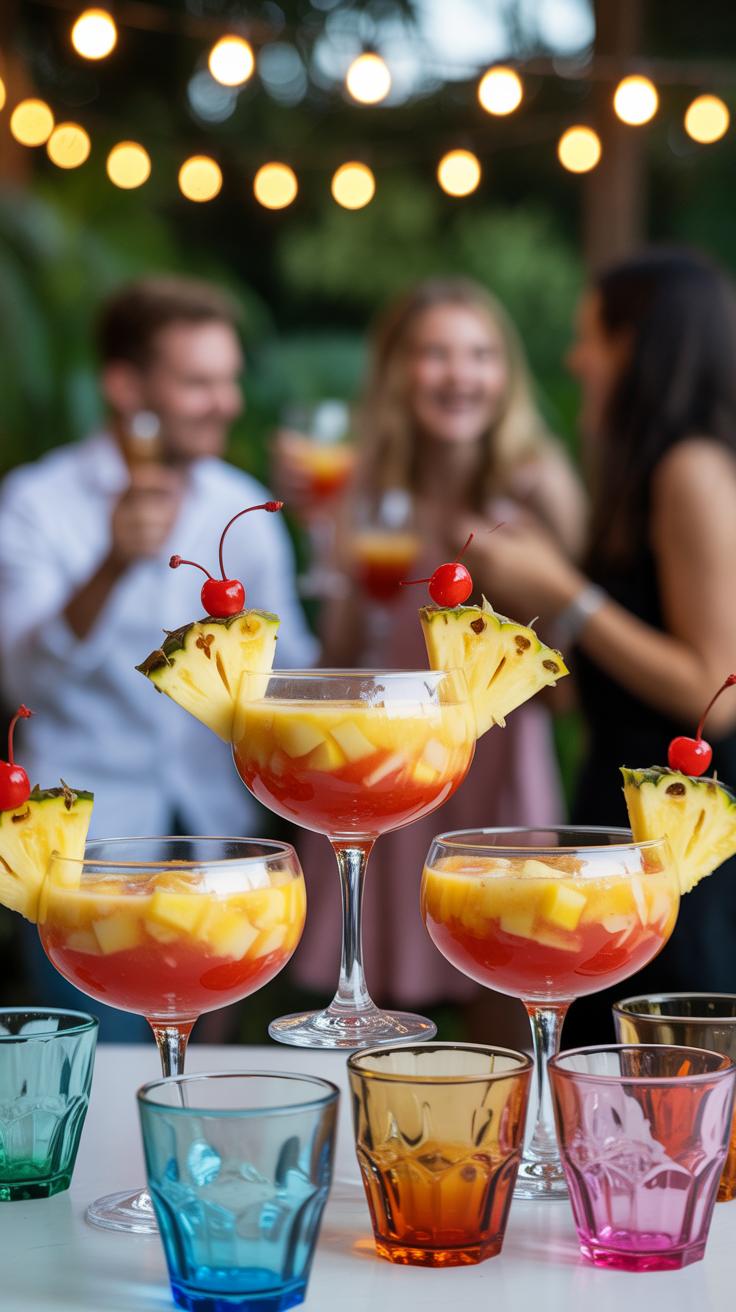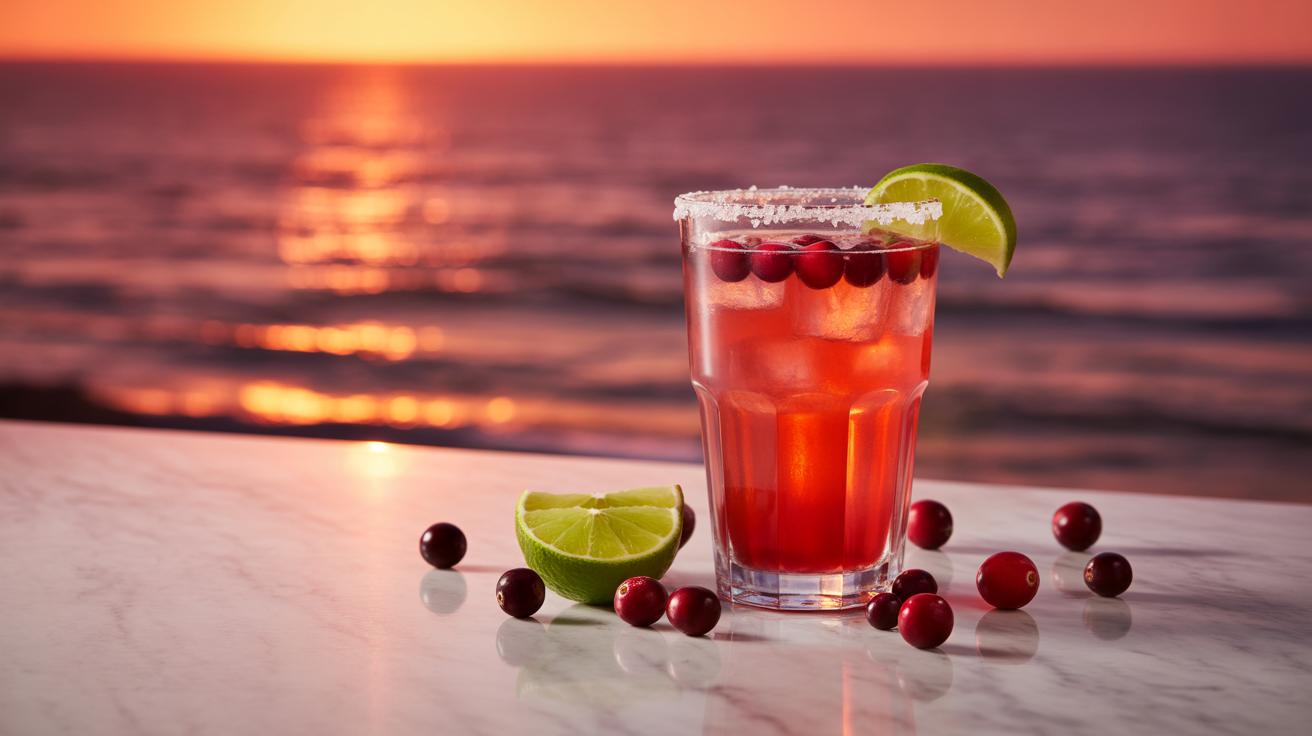Introduction
The piña colada is a tropical drink that blends rum, coconut cream, and pineapple juice. It has roots in Puerto Rico and is known for its smooth, sweet taste. Many people enjoy it as a refreshing escape from the daily routine.
This article will guide you through the classic piña colada recipe and several exciting variations you can try at home. You’ll learn about its history, key ingredients, and how to customize it to fit your taste. Ready to craft your perfect tropical drink this weekend?
The History of the Pia Colada
The piña colada’s story is tied closely to Puerto Rico. It’s a drink that captures a piece of the island’s spirit, though exactly how it came to be isn’t perfectly clear. Most agree it was developed sometime in the mid-20th century, with 1954 often mentioned as a key date. The tale usually involves bartenders experimenting with local ingredients—rum, coconut cream, and pineapple.
One popular claim credits Ramón “monchito” Marrero, a bartender at the Caribe Hilton in San Juan, with creating the drink. He supposedly crafted the recipe after months of trial and error to capture the flavors of Puerto Rico in a glass. Yet, other stories talk about similar versions appearing around the same time, leaving a bit of mystery to its true origin.
Why is the piña colada special? It embodies the island’s tropical bounty, combining sweet pineapple with creamy coconut and rum, which is deeply linked to Caribbean culture. The drink became symbolic not just for its taste, but also for how it evokes a sense of escapism and relaxation. It’s no surprise it was named Puerto Rico’s official beverage in 1978.
Have you ever wondered why this cocktail managed to rise above many other tropical drinks? Maybe it’s the perfect balance or the simplicity of ingredients. Or perhaps it’s how the piña colada invites you to slow down for a moment and enjoy something uniquely tied to a place and tradition. Whatever your take, its history adds an extra layer to every sip.
Essential Ingredients of the Classic Pia Colada
Rum, Pineapple Juice, and Coconut Cream
The core of a piña colada rests on just three key ingredients, each bringing a distinct character to the drink. Start with rum—traditionally, white rum is used for a light, crisp base. It adds a gentle warmth without overpowering the other flavors. Dark rum could work, but it changes the profile, making it a bit heavier and sweeter, which might not be what you’re after if you want that classic taste.
Then comes pineapple juice. Fresh is best whenever possible. It has a bright, tangy sweetness that cuts through the richness of the coconut cream. Canned or overly processed juice tends to lack that fresh, zesty bite, leaving the drink flat. The juice also lends a smooth texture and tropical freshness that’s hard to fake.
Finally, coconut cream provides the thick, creamy body that defines the piña colada’s signature mouthfeel. Unlike coconut milk, coconut cream is richer and less watery, offering a sweet, velvety character. It softens the acidity from the pineapple, balancing the flavors and giving the cocktail its lush, indulgent quality.
Choosing the Right Ingredients
Selecting good-quality ingredients can be tricky, but it’s worth the effort. For rum, look for brands that aren’t too harsh but still flavorful. Something aged slightly or a reputable white rum tends to work best—you want smoothness without losing the boozy spirit. Don’t just grab the cheapest bottle; it’ll show in the final taste.
As for pineapple juice, fresh-pressed juice is ideal. If you don’t have access to fresh pineapples, find a cold-pressed or premium juice with no added sugars or preservatives. You’ll notice the difference in brightness and natural flavor that way.
When it comes to coconut cream, avoid products labeled “cream of coconut” that are loaded with sugar and additives. Look for pure coconut cream or well-known brands that keep it simple. Some bartenders even blend fresh coconut meat with water to get a homemade version, which you might try if you want to experiment.
These choices shape the foundation of your piña colada. If any one ingredient falters, the balance shifts, and your cocktail won’t quite hit the mark.
StepbyStep Classic Pia Colada Preparation
Making a traditional piña colada isn’t complicated, but there are a few little things that can really make it stand out. Start by gathering your ingredients: white rum, coconut cream, fresh pineapple juice, and crushed ice. For a standard serving, I usually go with:
- 2 ounces white rum
- 1 ounce coconut cream
- 1 ounce pineapple juice
- 1 cup crushed ice
Throw these into your blender—make sure the ice is crushed to avoid big chunks messing with the texture. Blend for about 15 to 20 seconds. You want a smooth, icy mix but not too watery. If you don’t have a blender, a shaker works too, but then you’ll want to strain out the ice for a cleaner pour, though it loses some of that signature frosty feel.
Now, serving is simple but fun. Pour into a chilled glass—something like a hurricane glass works well. As for garnish, think pineapple wedges, maraschino cherries, or even a small paper umbrella. These touches might seem trivial but they really add to the experience. A cool glass and fresh garnish make sipping the drink feel special, not just another cocktail.
Tropical Fruit Variations to Try with Your Pia Colada
Adding or swapping fruits in your piña colada can lead to some surprisingly fresh twists. Mango, for example, brings a thicker, silkier texture and a sweeter note that changes the drink’s usual brightness. It softens the sharpness of the pineapple just enough, creating a more mellow sweetness. Banana can also be a game-changer; its creamy quality thickens the cocktail and adds a subtle earthy undertone that feels almost like a dessert.
Passionfruit, on the other hand, introduces a tangy punch that contrasts nicely with the coconut and pineapple. It’s not too overpowering but does lift the flavors in a way that’s quite refreshing—you might find yourself reaching for seconds faster than usual.
When it comes to fresh or frozen fruits, there’s a practical balance to strike. Fresh fruits often brighten the flavors and keep the texture lighter. Frozen fruits, though, make the drink colder and thicker without needing extra ice, which can water it down. Personally, I tend to mix both—fresh pineapple with frozen mango works well in keeping the drink both vibrant and textured. It’s a small detail but one that influences the taste more than you might expect. Do you prefer your piña colada silky or more like a slushy? That answer might guide your fruit choice.
Alcohol Alternatives and Enhancements for Your Pia Colada
Switching up the alcohol in your piña colada can really shift its character. Using dark rum, for example, adds a deeper, richer flavor with hints of caramel and molasses that contrast the sweetness of the pineapple and coconut. It’s a bit heavier, almost like the drink wears a different outfit—less tropical candy, more something you sip slowly.
Spiced rum introduces a subtle warmth, bringing notes of cinnamon, clove, or vanilla. It gives the cocktail a hint of complexity, making it feel less sweet and more layered. Flavored rums, such as coconut or mango, push the tropical vibe further but can sometimes overpower the classic balance if you’re not careful.
Curious about keeping it light or avoiding alcohol altogether? Non-alcoholic piña coladas are surprisingly easy and still satisfying. You just skip the rum and maybe add a splash of coconut water or pineapple juice to keep things fresh. Blending pineapple, coconut cream, and crushed ice alone creates a creamy, fruity drink that everyone can enjoy. You might want to add a little extra lime or a pinch of salt to make sure it doesn’t feel flat without the booze.
Have you ever tried swapping rums or going fully alcohol-free? Sometimes, the simplest tweaks can open new doors. It’s worth experimenting if you want to surprise your taste buds this weekend.
Healthy Twists on the Traditional Pia Colada
When you think about making a lighter piña colada, cutting down on sugar and calories is usually the first step that comes to mind. But the tricky part is keeping that creamy, tropical flavor without making it taste… well, flat. One way to do this is by swapping out the usual pineapple juice concentrate for fresh pineapple chunks blended with a splash of coconut water. It reduces sugar but still delivers the natural sweetness and tang.
Also, try using light coconut milk or even a diluted coconut cream rather than full-fat versions. It’s surprising how much this can cut calories without sacrificing the smooth texture you expect.
As for sweeteners, natural options like a drizzle of agave nectar or a touch of maple syrup can replace refined sugars. They add subtle depth but need to be used sparingly—you might find yourself experimenting a bit before you get the balance right.
Adding fresh fruit isn’t just for flavor. Tossing in mango or banana can give your drink a creamy texture and pack in vitamins and fiber, which feels good and tastes good, too. Sometimes, I like to add a handful of spinach—odd, I know—but it blends surprisingly well and boosts the drink’s nutrients without overpowering the sweetness.
Do you ever wonder if a healthier piña colada is worth it if it loses its indulgent feel? Maybe the answer lies somewhere in between, letting you enjoy a classic while feeling a bit better about it.
Perfecting Your Pia Colada Experience
When it comes to enjoying a piña colada, presentation really does play a role. Using the right glassware can make the whole experience feel more special, even if the drink itself is simple. Think about a tall hurricane glass or a curved tulip glass—these shapes not only hold the drink well but also showcase the creamy texture and tropical hues. If you use a plain tumbler, something is lost; it just doesn’t evoke that island vibe as much.
Garnishes are more than decoration. A slice of fresh pineapple or a maraschino cherry adds a pop of color and a hint of extra zest. Some like a small paper umbrella, but maybe that’s more for fun than necessity. I find that a mint sprig also gives a slight fresh contrast, which can be refreshing with the sweetness.
Timing makes a difference, too. Piña coladas feel right on a warm afternoon or during a lazy weekend brunch. They can brighten up a casual gathering or be the cool-down drink after outdoor activities. Serving them immediately after blending helps preserve the frothy texture, but if you’re making a batch, slightly chilling the glasses beforehand prevents the drink from getting warm too quickly.
Have you noticed how sometimes the best piña coladas come from those moments you didn’t overthink everything? Maybe that relaxed mood is part of the charm.
Creative Pia Colada Recipes to Try Today
Spicy and Exotic Flavors
Think about adding a hint of heat to your piña colada. It might sound unusual, but a dash of chili or a slice of jalapeño can wake up the familiar sweetness in an unexpected way. Try muddling fresh jalapeño with pineapple before blending, then balance it with coconut cream and rum. The spice lingers just long enough to surprise without overpowering. If you want to be bolder, a sprinkle of cinnamon or a touch of ginger works too—something warm, not just fiery. Some people swear by adding a splash of passion fruit juice for an exotic twist, though that can steer the drink into a different tropical territory.
Ever thought about herbal notes? Fresh basil or mint tossed in can freshen things up, making your piña colada feel lighter and maybe a bit more complex. It’s about layering flavors, not substituting one for the other. You might find yourself debating which version feels more refreshing on a warm afternoon.
Frozen and Blended Variations
Frozen piña coladas are a go-to, but there’s room to tweak the texture and intensity. Using crushed ice instead of whole ice cubes gives a slushier, chunkier sip while blending with frozen pineapple chunks adds more depth. For creaminess, some swap coconut milk for cream of coconut, but you could try mixing in Greek yogurt for tanginess and thickness—it’s not traditional but worth testing.
If you don’t own a blender, shaking the ingredients over ice in a cocktail shaker then straining into a glass with crushed ice still works well and keeps things cold without watery dilution. Also, freezing your glass beforehand helps maintain the chill longer—small details, but they do change the experience.
Thinking about fruit mix-ins? Mango or banana boost the tropical feel and alter texture slightly, making the drink smoother and maybe a bit denser. It’s a gentle shift, though some find it masks the pineapple too much. Maybe you want to try a few versions to see what suits your mood.
Conclusions
Making a piña colada at home is simple and fun. By understanding the basic ingredients and their balance, you can enjoy this refreshing tropical cocktail anytime. Trying different rums or adding fresh fruit can make your drink unique and suited to your taste.
Think about the flavors you like most. Would you prefer a creamier or fruitier drink? Experiment and discover new favorites among the piña colada variations. Your weekend refreshment can be a delightful mix of tradition and creativity.

